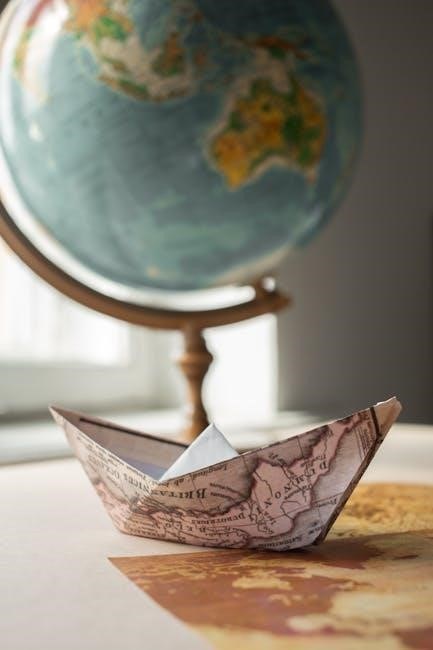Iceland’s diverse landscapes and remote locations make a travel guide map essential for navigating its unique regions, ensuring a well-planned and memorable adventure․
1․1 Overview of Iceland as a Travel Destination
Iceland captivates travelers with its breathtaking landscapes, from geothermal hot springs to majestic waterfalls and the mesmerizing Northern Lights․ Known for its untouched nature, the country offers a unique blend of adventure and tranquility․ Popular attractions like the Golden Circle, Ring Road, and South Coast draw millions annually․ Its diverse regions, including North, South, East, and West Iceland, provide endless opportunities for exploration․ Whether hiking through glaciers, relaxing in the Blue Lagoon, or discovering vibrant culture in Reykjavík, Iceland promises unforgettable experiences․ Its remote yet accessible location makes it a perfect destination for both nature enthusiasts and those seeking a mix of outdoor adventures and cultural insights․
1․2 Importance of a Travel Map for Iceland
A travel map is indispensable for navigating Iceland’s vast, remote landscapes․ It helps identify key attractions, such as waterfalls, geothermal areas, and hiking trails, ensuring no highlights are missed․ With limited internet access in rural areas, a detailed map serves as a reliable backup for GPS․ It aids in planning routes, understanding distances, and locating accommodations․ A good map also highlights hidden gems and lesser-known spots, enhancing the exploration experience․ Additionally, it provides essential information for safe travel, such as road conditions and weather alerts․ Whether physical or digital, a travel map is a crucial tool for making the most of your Icelandic adventure․
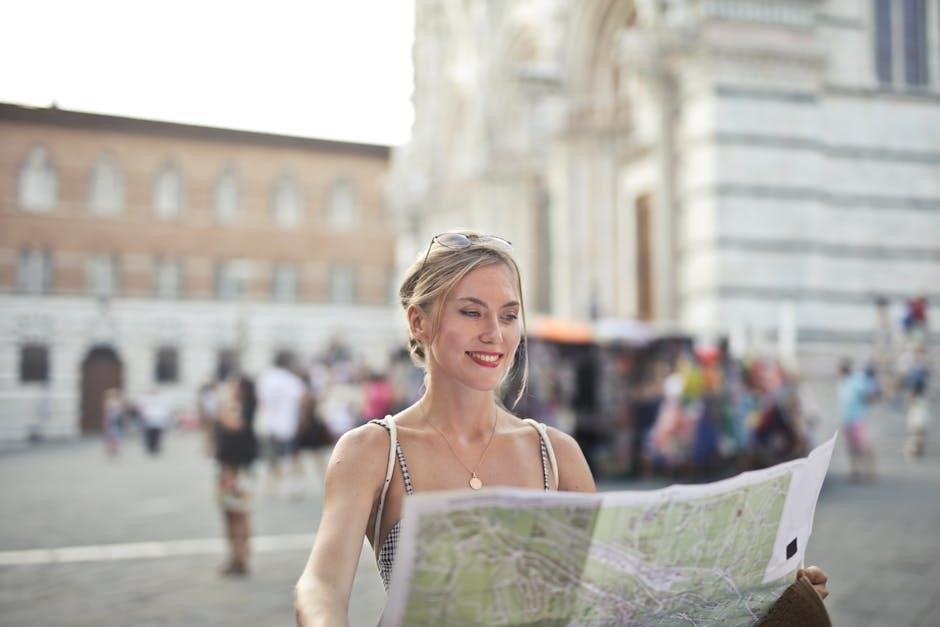
Planning Your Iceland Trip
Plan your Iceland trip by creating an itinerary, budgeting, packing essentials, and arranging transportation․ Use interactive maps and tools to ensure a smooth and enjoyable journey․
2․1 Steps to Plan a Perfect Itinerary
Start by determining your trip’s purpose, duration, and interests․ Research destinations and activities, then allocate days based on travel times․ Use a map to visualize routes and proximity of attractions․ Consider the time of year and weather conditions, as they impact accessibility․ Prioritize must-see spots and balance with hidden gems․ Create a day-by-day plan, ensuring flexibility for spontaneity․ Book accommodations and activities in advance, especially during peak seasons․ Finally, review and adjust your itinerary to ensure a smooth, enjoyable journey through Iceland’s breathtaking landscapes․ A well-planned itinerary enhances your travel experience and helps you make the most of your time․
2․2 Budgeting and Cost Management
Budgeting for Iceland requires careful planning due to its high costs․ Estimate expenses for accommodation, food, transportation, and activities․ Consider affordable options like hostels, camping, and self-catering․ Plan meals by cooking rather than dining out․ Use public transport or rent economy cars to save on travel costs․ Pre-book attractions and tours to secure discounts․ Monitor currency exchange rates and use cashless payments․ Track spending with budgeting apps to stay on target․ Allocating a buffer for unexpected expenses ensures financial flexibility․ By prioritizing needs and exploring cost-effective alternatives, travelers can enjoy Iceland without overspending, making their trip both memorable and financially manageable․
2․3 Packing Essentials for Different Seasons
Packing for Iceland requires adaptability to its unpredictable climate․ Always include layered clothing, waterproof gear, and sturdy footwear․ For summer, bring breathable fabrics, sunglasses, and a hat․ In winter, prioritize thermal layers, gloves, and a heavy coat․ Spring and autumn demand versatile wardrobes with waterproof items․ Don’t forget swimwear for geothermal pools and a reusable water bottle․ Check weather forecasts before your trip to ensure preparedness․ Pack essentials like a first-aid kit and power adapter․ Avoid overpacking by planning outfits for each activity․ By tailoring your luggage to the season, you’ll be ready to embrace Iceland’s diverse landscapes and conditions comfortably and efficiently․
2․4 Transportation Options in Iceland
Iceland offers a variety of transportation options to suit different travel styles․ Renting a car is the most popular choice, providing flexibility to explore remote areas․ Public transportation, like buses, is reliable but limited in rural regions․ Domestic flights connect major towns quickly, ideal for saving time․ For adventure seekers, bike rentals or campervans are great for immersive experiences․ Guided tours are perfect for those preferring hassle-free exploration․ The Ring Road (Route 1) circles the island, while F-roads require 4×4 vehicles․ Always check road conditions and weather forecasts, especially in winter․ Plan ahead to ensure smooth travel, whether driving or using public services․
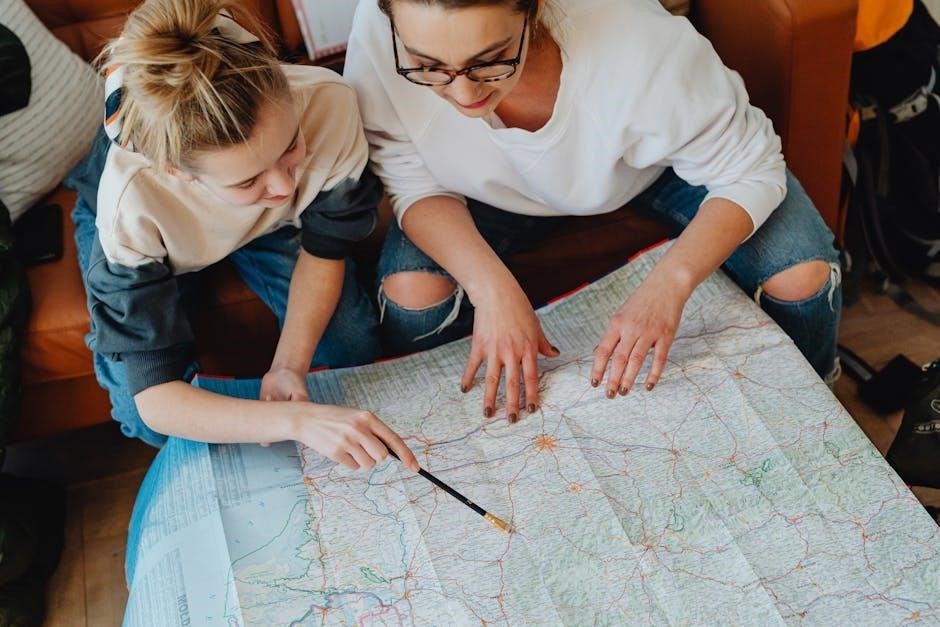
Regional Maps of Iceland
North Iceland boasts stunning landscapes, including Akureyri, Husavik, and Godafoss․ A detailed map aids in exploring scenic drives, hiking trails, and hidden gems efficiently․
3․1 Detailed Map of North Iceland
North Iceland is a treasure trove of natural wonders, from the vibrant city of Akureyri to the breathtaking waterfalls like Godafoss․ A detailed map highlights key attractions such as Lake Mývatn, known for its unique volcanic landscapes and colorful wildlife, and the picturesque town of Húsavík, famous for whale watching․ The Diamond Circle, a popular route, is also clearly marked, offering a perfect blend of culture and nature․ With a detailed map, travelers can explore remote areas like the Westfjords and the highland regions, ensuring they don’t miss hidden gems․ It’s an indispensable tool for planning an unforgettable adventure in this stunning region․
3․2 Exploring South Iceland
South Iceland is a realm of unparalleled beauty, featuring iconic landmarks like the Golden Circle, stunning waterfalls such as Gullfoss and Skógafoss, and the breathtaking black sand beach of Reynisfjara․ A detailed map of this region reveals hidden gems, including the glacier-capped Eyjafjallajökull and the serene Skaftafell National Park․ The South Coast is dotted with charming villages like Vík and Kirkjubæjarklaustur, offering a mix of history and natural splendor․ With a map, travelers can navigate the scenic Route 1 and discover off-the-beaten-path destinations․ South Iceland’s diverse landscapes, from lush valleys to glaciers, make it a must-explore region for any traveler, ensuring an unforgettable journey through its pristine beauty․
3․3 West Iceland Highlights
West Iceland captivates travelers with its diverse landscapes and rich cultural heritage․ The Snæfellsnes Peninsula, often called “Iceland in miniature,” boasts stunning glaciers like Snæfellsjökull, picturesque coastal towns, and iconic black sand beaches․ A detailed map reveals hidden gems, such as the breathtaking waterfalls of Hraunfossar and Barnafoss, and the historic settlement of Borgarnes․ The region is also home to Þingvellir National Park, a UNESCO World Heritage Site, where the continental plates diverge․ With a map, explore the vibrant culture, scenic hiking trails, and wildlife, including orcas in the nearby fjords․ West Iceland offers a mix of natural beauty and history, making it a highlight of any Icelandic adventure․
3․4 East Iceland Attractions
East Iceland is a treasure trove of natural beauty and cultural richness․ The East Fjords, with their dramatic coastal scenery, offer picturesque fishing villages like Seyðisfjörður and Borgarfjörður․ Lake Lagarfljót, home to the legendary Lagarfljótsormur serpent, is a must-visit, while the remote highlands provide breathtaking hiking trails․ The regional capital, Egilsstaðir, serves as a hub for exploring the area’s hidden gems, such as the stunning waterfall Hengifoss and the unique Stuðlagil Canyon․ A detailed map is essential to navigate the winding roads and discover the serene landscapes, making East Iceland a captivating destination for outdoor enthusiasts and nature lovers alike․
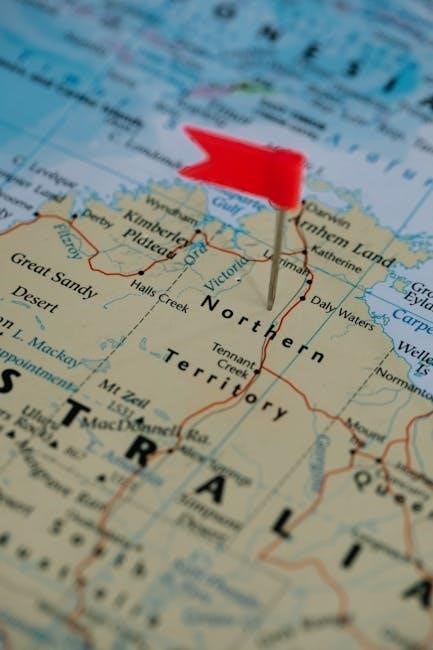
Interactive Maps and Tools
Interactive maps and tools enhance your Iceland journey with real-time navigation, offering detailed insights and exclusive location highlights, ensuring a seamless and enjoyable travel experience․

4․1 Best Interactive Maps for Iceland
Discover the best interactive maps for Iceland, such as Google Maps, Wanderlog, and Iceland’s official tourism website, offering real-time navigation, detailed landmarks, and customizable itineraries․ These tools provide essential features like GPS tracking, weather updates, and road condition alerts, ensuring a smooth journey․ Wanderlog allows users to organize destinations and share plans, while apps like Maps․me offer offline access, perfect for remote areas․ Iceland’s official tourism site includes hidden gems and local insights, helping travelers explore beyond popular spots․ These interactive maps are indispensable for planning and navigating Iceland’s unique landscapes, making your adventure stress-free and unforgettable․
4․2 Using GPS for Navigation
GPS is a vital tool for navigating Iceland’s vast and sometimes remote landscapes․ Popular apps like Google Maps and Maps․me provide accurate directions, while dedicated devices like Garmin offer offline capabilities․ Ensure your device is updated with the latest Iceland maps for optimal performance․ GPS helps locate hidden gems and ensures you stay on track, especially on less-traveled routes․ Remember to download offline maps in case of limited internet access, and consider renting a car with a built-in GPS system․ This technology is crucial for exploring Iceland’s diverse regions confidently and efficiently, making your journey both enjoyable and stress-free․
4․3 Recommended Travel Apps
Several travel apps are indispensable for planning and navigating Iceland․ Google Maps and Maps․me provide detailed offline maps, essential for remote areas․ Wanderlog helps organize itineraries and track locations․ Road Trippers offers route planning and hidden gems․ The Icelandic Met Office app delivers crucial weather updates, while the Icelandic Road and Coastal Administration app provides real-time road conditions․ Apps like Guide to Iceland and Iceland Travel Guide offer insights into attractions and activities․ These tools ensure a seamless and enjoyable journey, helping you make the most of your Icelandic adventure with up-to-date information and practical features․
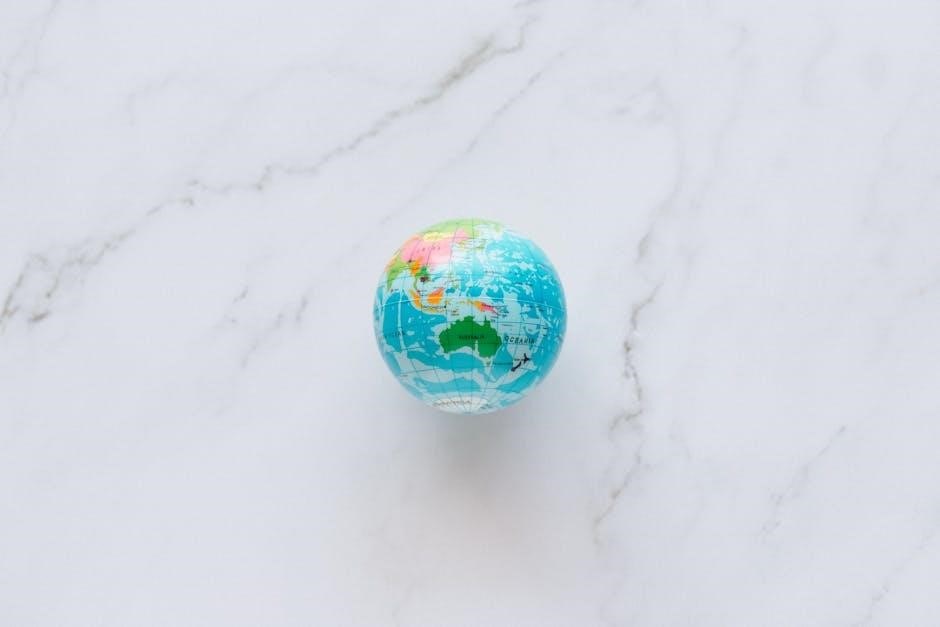
Key Destinations and Landmarks
Iceland’s iconic landmarks include the Golden Circle, Ring Road, and breathtaking waterfalls like Gullfoss and Skógafoss․ Explore the Blue Lagoon, Jökulsárlón Glacier Lagoon, and the East Fjords․
5․1 The Golden Circle
The Golden Circle is Iceland’s most popular day trip route, offering a perfect blend of natural wonders and historical sites․ It includes Þingvellir National Park, a UNESCO World Heritage Site where the continents divide, Geysir, the original hot spring that gave its name to all geysers, and Gullfoss, a breathtaking waterfall․ These landmarks provide a glimpse into Iceland’s unique geology and history․ Visitors can explore the rift valley, witness the erupting Strokkur geyser, and marvel at the golden hues of Gullfoss․ The Golden Circle is easily accessible and ideal for those seeking a concise yet unforgettable Icelandic experience․ Guided tours or self-driving options are available, making it a must-visit for any traveler․
5․2 Ring Road Highlights
The Ring Road, or Route 1, encircles Iceland, offering a scenic journey through diverse landscapes․ Key highlights include Jökulsárlón Glacier Lagoon, where icebergs float on a glacial lake, and Lake Mývatn, known for its vibrant colors and unique geological formations․ The East Fjords provide breathtaking coastal views, while the South Coast features iconic waterfalls like Seljalandsfoss and Skógafoss․ The Snæfellsnes Peninsula, with its picturesque towns and mythical connections, is another standout․ Self-driving the Ring Road allows travelers to explore these attractions at their own pace, though a 7-10 day itinerary is recommended to fully appreciate the beauty of Iceland’s circumference․ This route is a quintessential Icelandic experience, capturing the essence of the country’s natural wonders year-round․
5․3 Top Waterfalls in Iceland
Iceland is renowned for its stunning waterfalls, each offering a unique visual spectacle․ Seljalandsfoss, famous for its cascade behind which visitors can walk, and Skógafoss, known for its lush surroundings, are must-visit spots․ Gullfoss, part of the Golden Circle, captivates with its powerful flow and rainbow displays․ Dettifoss, Europe’s most powerful waterfall, impresses with its sheer force․ These natural wonders, scattered across the island, make them easily accessible via the Ring Road․ Their beauty and diversity attract photographers and nature enthusiasts alike, making waterfalls a highlight of any Icelandic journey․
5․4 Geothermal Areas
Iceland is a geothermal paradise, with numerous hot springs, geysers, and vibrant landscapes shaped by volcanic activity․ The Golden Circle’s Geysir, the original geyser, and its neighbor Strokkur, which erupts every few minutes, are iconic spots․ The Blue Lagoon, a milky-blue spa nestled in a lava field near Reykjavik, offers a unique relaxation experience․ Other highlights include Landmannalaugar, known for its multicolored rhyolite mountains and natural hot springs, and Hveravellir, a geothermal oasis in the highlands․ Reykjanes Peninsula, a UNESCO Global Geopark, features Seltún’s steaming vents and Kleifarvatn Lake․ These areas showcase Iceland’s raw geothermal power and natural beauty, making them unforgettable destinations for travelers․
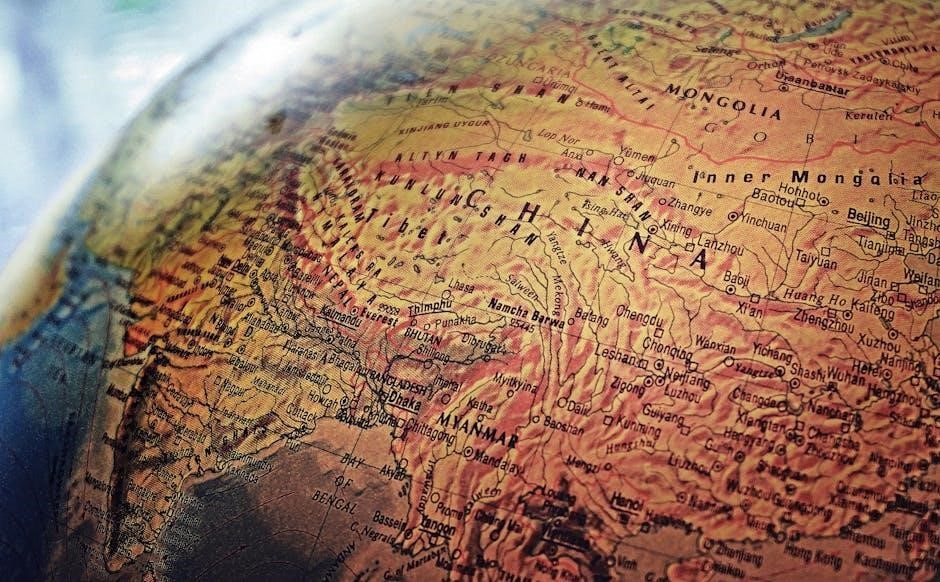
Practical Information
Essential tips and tools for navigating Iceland, including road safety, emergency contacts, and weather alerts, ensure a smooth and well-prepared journey through the country’s unique landscapes․
6․1 Road Safety Tips
Driving in Iceland requires caution due to unique conditions like F-roads, unpredictable weather, and single-lane bridges․ Always check weather alerts, use GPS for navigation, and stay alert for sheep on roads․ Rent a suitable vehicle for highland adventures and ensure it has proper insurance․ Keep emergency supplies like a first-aid kit and flashlight in your car․ Be prepared for sudden changes in visibility and road closures․ Respect nature by staying on designated paths and avoiding risky behaviors․ Follow local guidelines and signs carefully to ensure a safe and enjoyable journey through Iceland’s stunning landscapes․
6․2 Emergency Contacts
In case of emergencies in Iceland, dial 112 for immediate assistance․ This number connects to police, ambulance, and fire services․ For non-urgent situations, contact local authorities․ The Icelandic Association for Search and Rescue (ICE-SAR) is crucial for remote area emergencies․ Keep their number handy․ Always carry a fully charged phone and consider renting a GPS device with emergency beacon functionality․ Inform someone about your itinerary and expected return time․ In extreme weather, follow safety guidelines and stay updated via weather alerts․ Knowing these contacts ensures quick help when needed, enhancing safety during your Icelandic adventure․
6․3 Weather Alerts and Updates
Stay informed about Iceland’s unpredictable weather using reliable sources․ The Icelandic Meteorological Office provides real-time updates and forecasts․ Enable notifications for severe weather alerts, especially during winter․ Check road conditions on the Road and Coastal Administration website․ Monitor wind, snow, and glacier alerts, which can impact travel plans․ Use apps like Weather Forecast or Safe Travel for current conditions․ Always follow safety guidelines and adjust your itinerary if necessary․ Keeping tabs on weather ensures a safer and more enjoyable journey through Iceland’s diverse landscapes and climate zones․
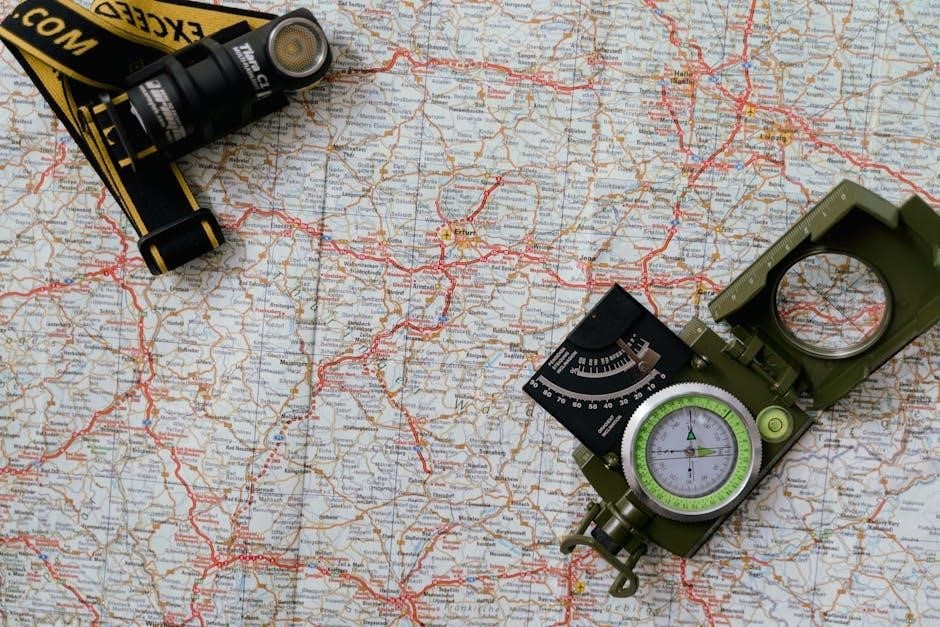
Cultural and Historical Insights
Discover Iceland’s rich Viking heritage, unique folklore, and vibrant culture․ Explore historical sites, traditions, and local customs to deepen your connection with this enchanting Nordic nation․
7;1 Understanding Icelandic Culture
Immerse yourself in Iceland’s unique culture, deeply rooted in Viking history and folklore․ The Icelandic language, a Nordic tongue, preserves ancient traditions․ Community and resilience are central values, shaped by the harsh yet breathtaking environment․ Festivals like Þorrablót celebrate heritage, while modern Reykjavík thrives with art and music․ Respect for nature and sustainability is ingrained, reflecting a strong environmental consciousness․ Understanding these cultural nuances enhances your travel experience, allowing you to connect with locals and appreciate the land’s soul․ Use your travel guide map to explore historical sites and engage with customs, ensuring a meaningful journey through Iceland’s captivating culture and landscapes․
7․2 Historical Sites to Visit
Exploring Iceland’s historical sites offers a glimpse into its rich Viking heritage and cultural evolution․ Visit Þingvellir National Park, where the world’s first parliament, Alþingi, was established in 930 AD․ The Settlement Exhibition in Reykjavík showcases the ruins of a Viking-era longhouse, providing insights into early Icelandic life․ Skálholt Cathedral, a historic bishopric, and the ancient church ruins of Þórsmörk are must-visits․ These landmarks, marked on your travel guide map, highlight Iceland’s history and its connection to the Norse settlers․ Discover the stories behind these sites to deepen your understanding of the nation’s identity and its enduring legacy in the modern world․

7․3 Local Etiquette
Respecting Icelandic customs enhances your travel experience․ Remove shoes before entering homes, as this is a common courtesy․ When dining, tipping isn’t mandatory but rounding up the bill is appreciated․ Punctuality is valued in meetings and reservations․ Learning basic Icelandic phrases, like “þakka þér” (thank you), shows respect․ Respect nature by staying on designated paths to protect sensitive landscapes․ These gestures reflect Iceland’s strong community and environmental values, ensuring a harmonious visit․ Understanding local etiquette helps travelers connect with the culture and people, fostering a positive and memorable journey in this unique and breathtaking country․
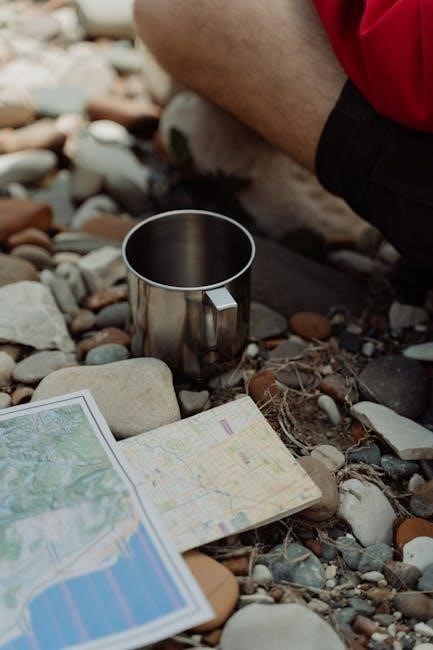
Additional Resources
Discover essential resources for planning your Iceland trip․ Explore recommended travel guides, useful websites, and community forums for unbiased advice and expert tips․
- Recommended travel guides
- Useful websites for planning
- Community forums and groups
8․1 Recommended Travel Guides
For a seamless Iceland adventure, rely on trusted travel guides․ Video courses and detailed itineraries offer expert insights, while foldable maps provide tactile navigation․ Explore resources like the “7-Day Iceland Itinerary” and “Iceland road trip” guides for comprehensive planning․ These tools cover must-see attractions, hidden gems, and practical tips for transportation and accommodation․ Digital guides often include interactive features, while traditional maps ensure offline accessibility․ Many travelers recommend combining guides with forum advice from communities like r/VisitingIceland․ Whether you prefer digital convenience or physical maps, these resources empower you to craft a personalized journey tailored to your interests and preferences․
8․2 Useful Websites for Planning
Key websites simplify Iceland trip planning․ Wanderlog aids in organizing itineraries with sections for regions․ Google Maps offers GPS navigation and real-time updates․ Official tourism sites provide insights into attractions and local tips․ Community forums like r/VisitingIceland share traveler experiences and advice․ Driving guides and budget tips are also available online․ These resources ensure a well-prepared and stress-free journey․
8․3 Community Forums and Groups
Joining community forums and groups is a great way to connect with fellow travelers and locals for firsthand advice on Iceland․ Reddit’s r/VisitingIceland and Facebook groups dedicated to Iceland travel offer valuable insights, tips, and real experiences․ These platforms are perfect for asking questions, sharing itineraries, and learning about hidden gems․ Many travelers also use these spaces to discuss budgeting, transportation, and accommodation options․ Engaging with these communities ensures you stay updated on the latest travel conditions and insider tips․ They provide practical advice and help you avoid common pitfalls, making your trip planning more efficient and enjoyable․
With careful planning and the right tools, your Iceland journey will be unforgettable․ Embrace the adventure, stay prepared, and enjoy the breathtaking landscapes this unique country offers․
9․1 Final Tips for a Stress-Free Trip
For a seamless Iceland adventure, ensure you have a detailed map and check weather alerts regularly․ Use GPS for navigation and stay flexible with your itinerary․ Respect nature and local rules, and always carry an emergency kit․ Check road conditions via the Icelandic Road and Coastal Administration and inform someone about your travel plans․ Pack layers for unpredictable weather and keep your vehicle well-equipped․ Consider purchasing travel insurance and learning basic Icelandic phrases․ Stay informed about local etiquette and emergency contacts like 112 for urgent situations․ With preparation and awareness, your trip will be memorable and stress-free․ Enjoy the breathtaking landscapes responsibly!
9․2 Encouragement to Explore
Iceland is a land of unparalleled beauty, offering endless opportunities for exploration․ From the shimmering waterfalls to the vast black sand beaches, every corner holds a unique charm․ Embrace the adventure by diving into its vibrant culture, history, and untouched landscapes․ Use your travel guide map to uncover hidden gems and iconic spots, ensuring a journey filled with wonder․ Whether you’re chasing the Northern Lights or hiking through glaciers, Iceland promises unforgettable experiences․ Stay curious, be open to new encounters, and let the spirit of exploration guide you through this enchanting island․ Your adventure awaits—start planning and make memories that will last a lifetime!
